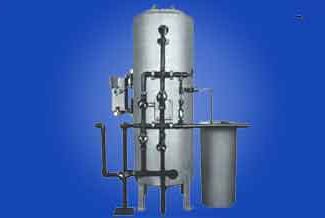Almost everyone knows that the water used by us in the process of life is characterized by the so-called “hardness”. By this concept is meant the degree of its saturation with cations of magnesium and calcium. Softening water can significantly improve its quality.
In hard water, food is boiled for a long time, some detergents, powder and soap are practically not “washed”, and characteristic plaque (scale) consisting of mineral deposits forms on water pipes and teapots. In addition, such water can cause salt deposition in the human body or in domestic animals.
Water softening is carried out to purify the hardness salts present in it. Any tap water, in addition to purification from impurities and bacteria, undergoes the removal of magnesium and calcium salts. Water softening can be carried out by various methods. The choice of one or the other of them is determined mainly by the type and amount of water hardness, as well as in accordance with technical and economic feasibility.

It can occur thermal (based on water heating), reagent (based on the binding of magnesium and calcium ions by certain reagents, followed by filtration of insoluble compounds) or by a combined method (combines several methods of water treatment). The ion exchange method is also very widespread, in which water is filtered through certain special materials. With this processing method, the exchange of hydrogen and sodium ions that are part of these filters, for magnesium and calcium ions. Various materials are used to filter water. Some of them are of natural origin, but most often different synthetic resins are used. Among the ultramodern methods of water softening, nanofiltration should be highlighted.
Softened water supplied by centralized water pipelines should not have a hardness of more than 7 mEq / cubic dm. Only with the agreement of the Sanitary and Epidemiological Service, water with a hardness of up to 10 mEq / cubic dm is allowed.
Softening the water in the cottage can be done using the reagent method, in which soda and lime are used as reagents. Liming is carried out when it is necessary to reduce the alkalinity and hardness of the water. Soda with lime softens water, in which magnesium and calcium are contained together with strong acid anions. But do not forget that such treatment has its adverse effects. Softening water at home with the soda-lime method leads to the saturation of the liquid with calcium carbonate and an increase in its pH.
Among the simplest methods, boiling water for an hour, followed by settling for precipitation, softening with various alkalis (potash, baking soda, ammonia), softening with almond bran obtained by grinding seeds of sweet almonds should be noted. Water intended for domestic use can be softened with ordinary brine or laundry soap. For professional water treatment at home, special softeners are used, reminiscent of their appearance with a balloon or urn, which can easily be placed in the kitchen.